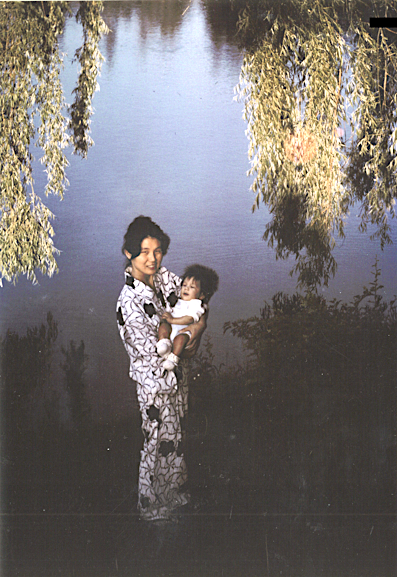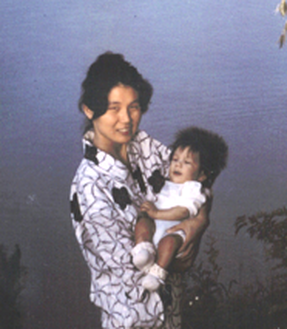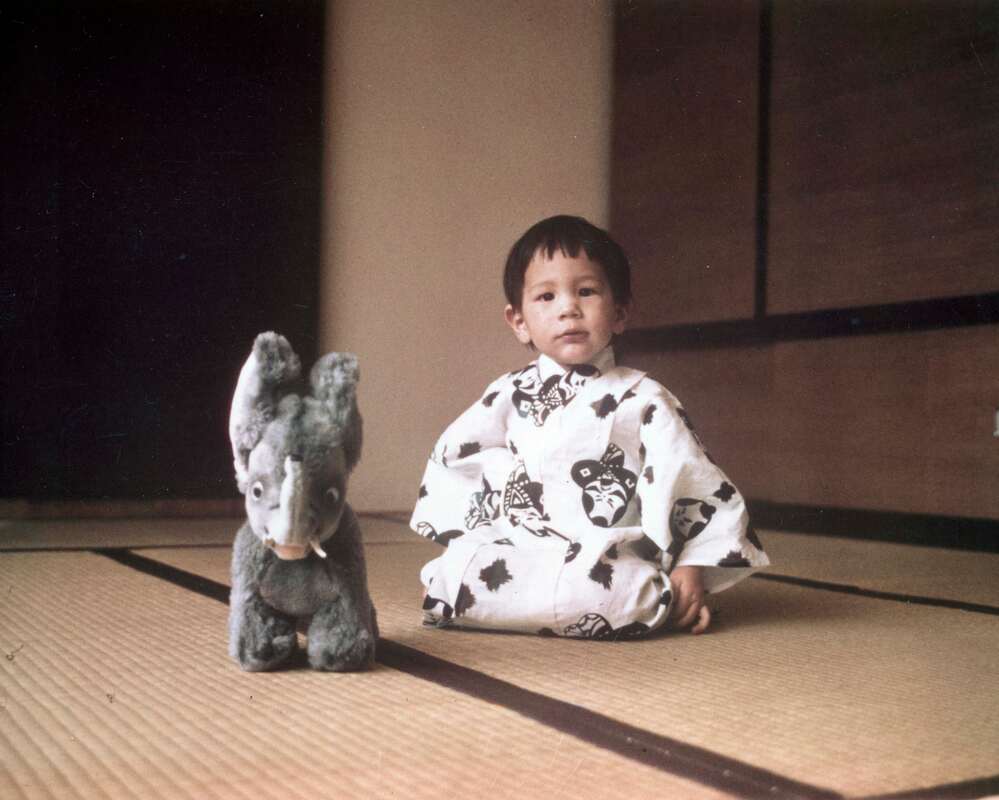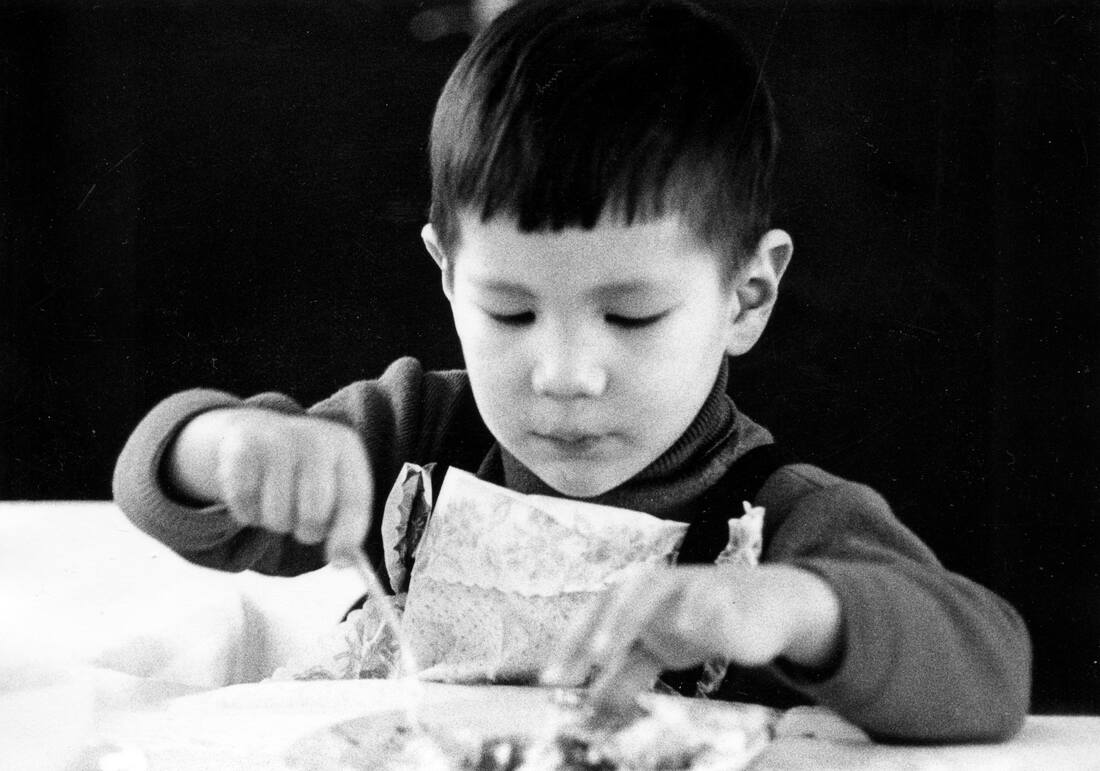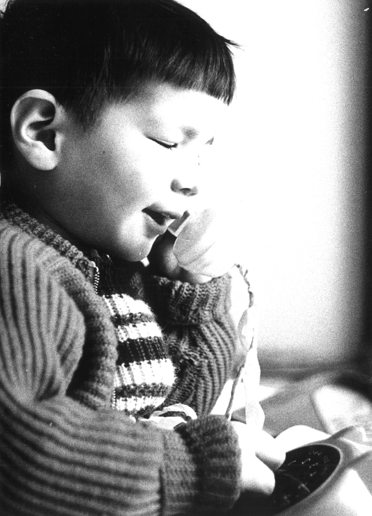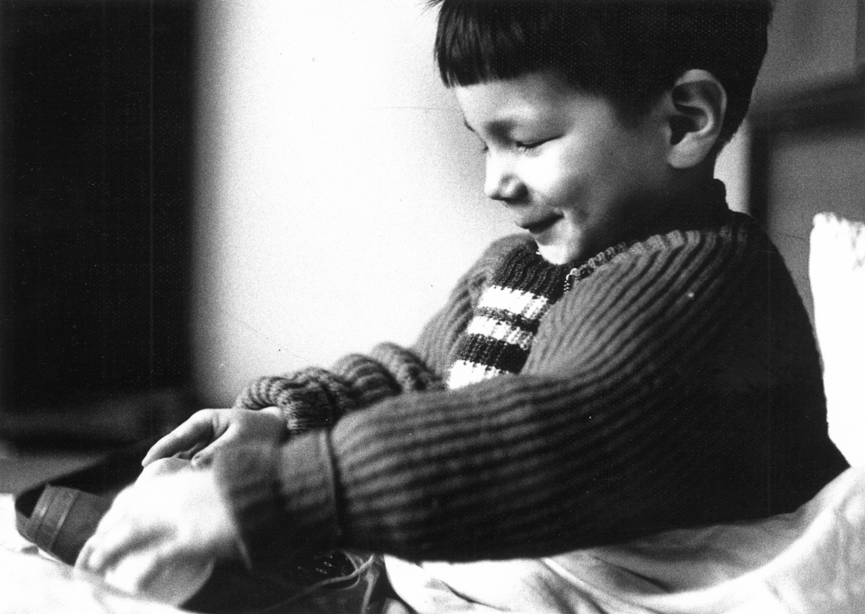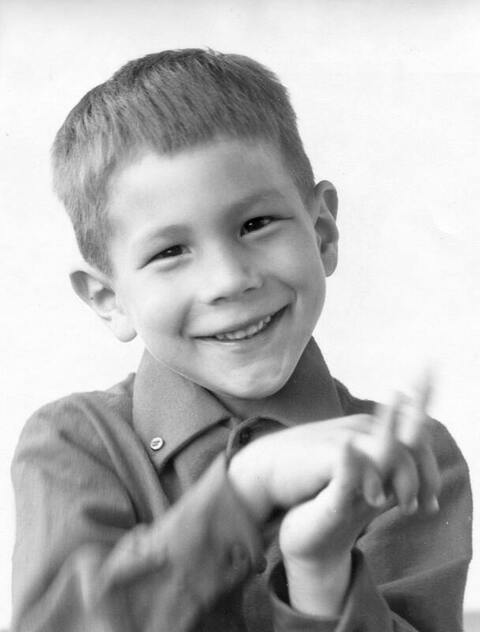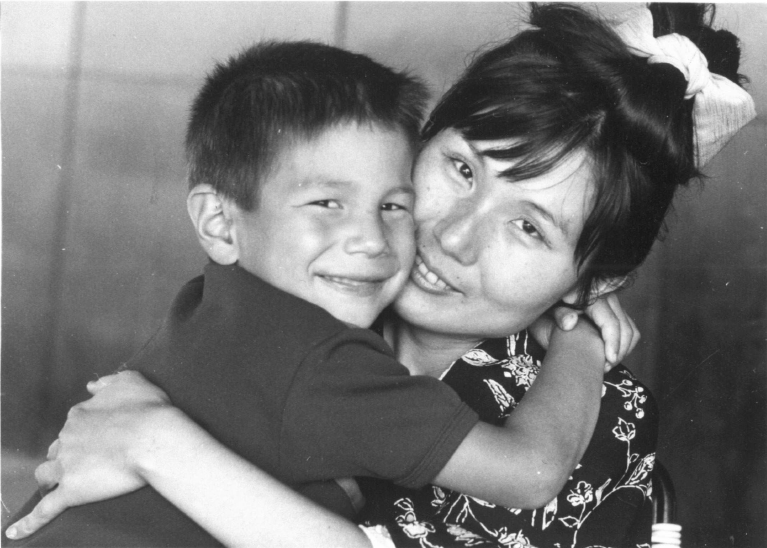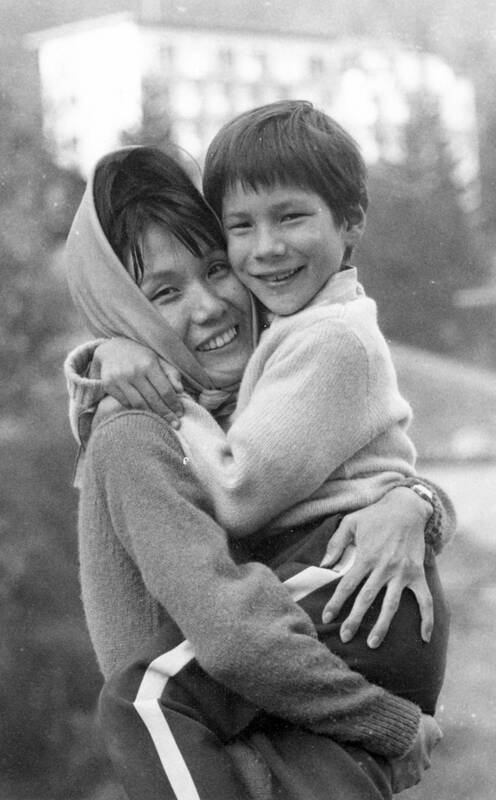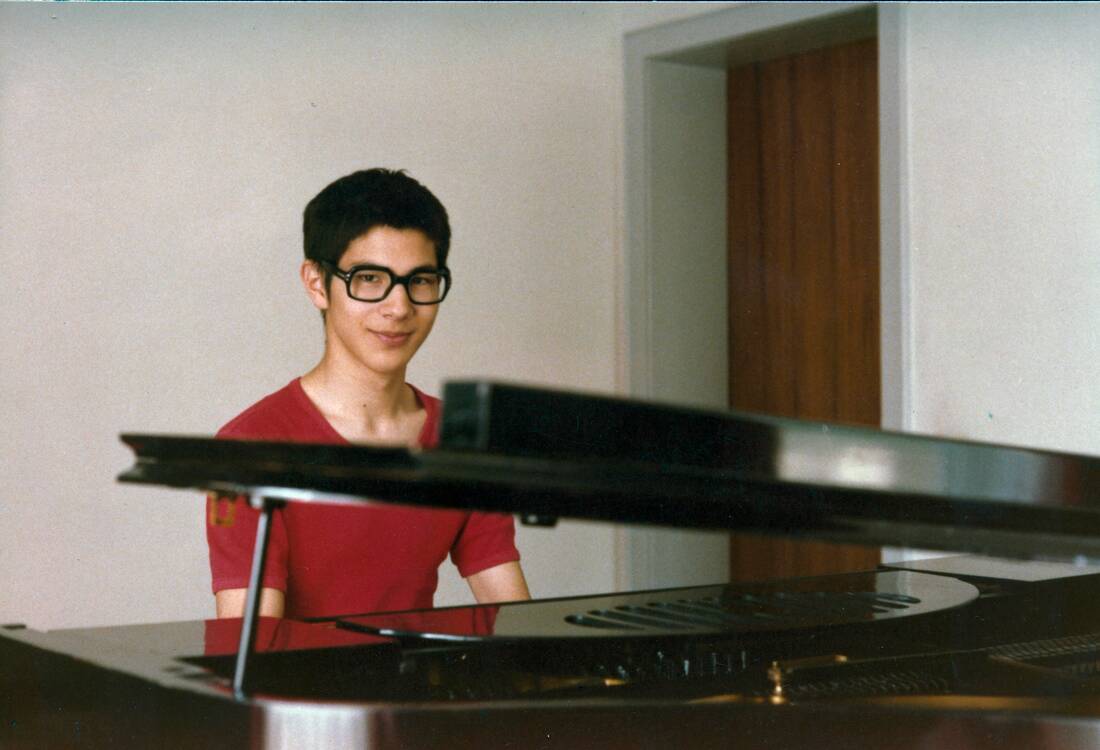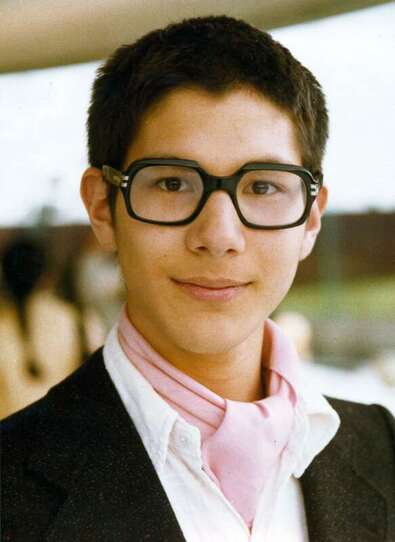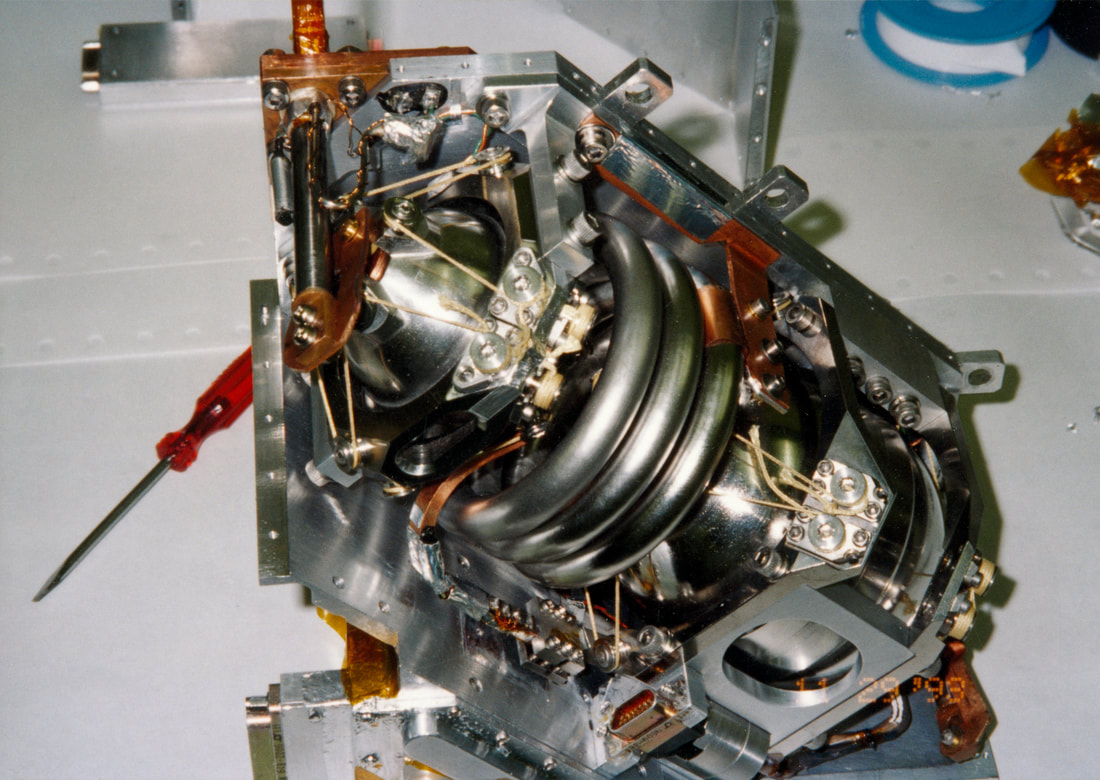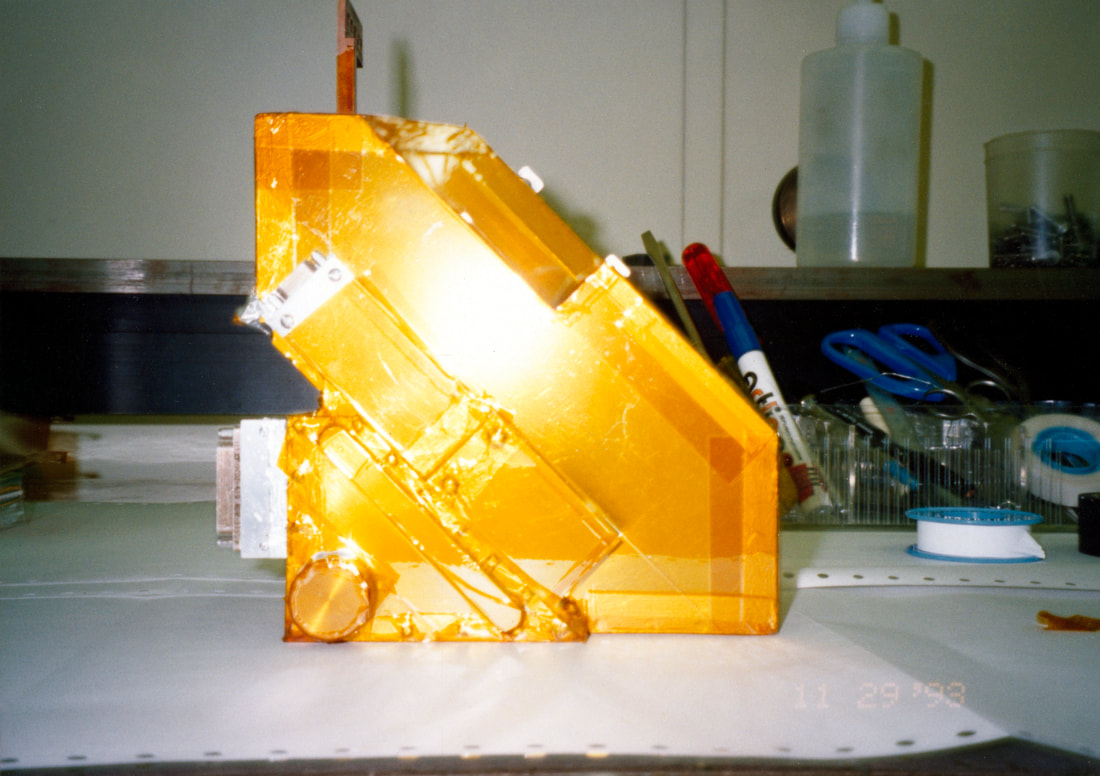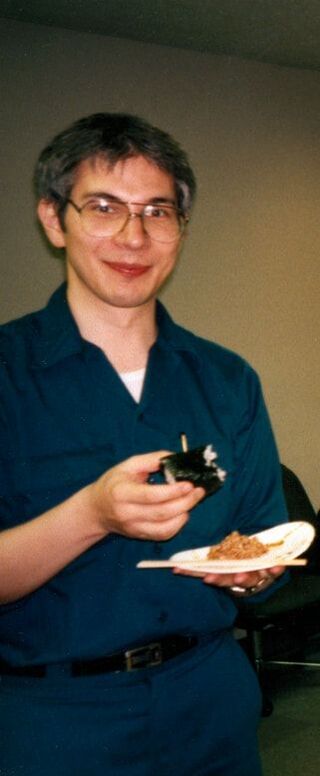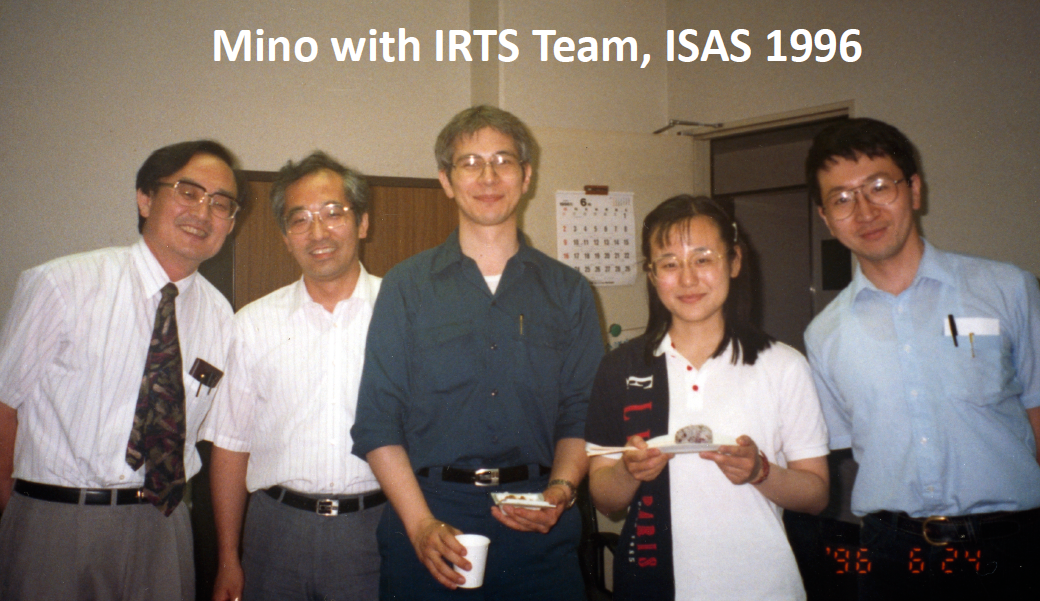When Mino was just four months old, we moved to Germany, where my husband became professor.
I started to learn the German language – not an easy task – spent much time with little Mino, playing, singing and dancing with him, watching him grow, answering the myriad questions that came to his inquisitive mind, jotting his questions down in my diary – thousands of entries, hundreds of pages.
I started to learn the German language – not an easy task – spent much time with little Mino, playing, singing and dancing with him, watching him grow, answering the myriad questions that came to his inquisitive mind, jotting his questions down in my diary – thousands of entries, hundreds of pages.
Mino chatting with the police as described in one of the chapters of the “Mino” book
Origami: folding a sheet of paper to create a crane.
Mino clapping hands to the song of racoons dancing in the temple garden
With Mama at home
Crans in Switzerland
Practicing at my Bechstein Grand Piano
Mino, just graduated with the German abitur and French baccalaureate
Fast forward to Mino having obtained his PhD in Physics at the ETH in Zürich, Switzerland – one of the best schools, if not the best, in continental Europe, Einstein’s Alma Mater.
During his PhD thesis Mino worked with three Nobel Prize winners. He built one of the first Scanning Tunneling Microscopes in the world – so powerful, you can see individual atoms, one millionth of the width of a hair. He learned all about liquid helium, even the very rare 3-He isotope which is most difficult to condense to a liquid. Exploiting the subtle difference between 4-He and 3-He isotopes Mino learned how to reach temperatures only a fraction of a degree above absolute zero.
With this knowledge and technical know-how Mino came back to the USA, to the University of California Berkeley, to work on a joint Japan-US satellite mission, the Infrared Telescope in Space, IRTS. The IRTS mission set many firsts in space-based infrared astronomy.
During his PhD thesis Mino worked with three Nobel Prize winners. He built one of the first Scanning Tunneling Microscopes in the world – so powerful, you can see individual atoms, one millionth of the width of a hair. He learned all about liquid helium, even the very rare 3-He isotope which is most difficult to condense to a liquid. Exploiting the subtle difference between 4-He and 3-He isotopes Mino learned how to reach temperatures only a fraction of a degree above absolute zero.
With this knowledge and technical know-how Mino came back to the USA, to the University of California Berkeley, to work on a joint Japan-US satellite mission, the Infrared Telescope in Space, IRTS. The IRTS mission set many firsts in space-based infrared astronomy.
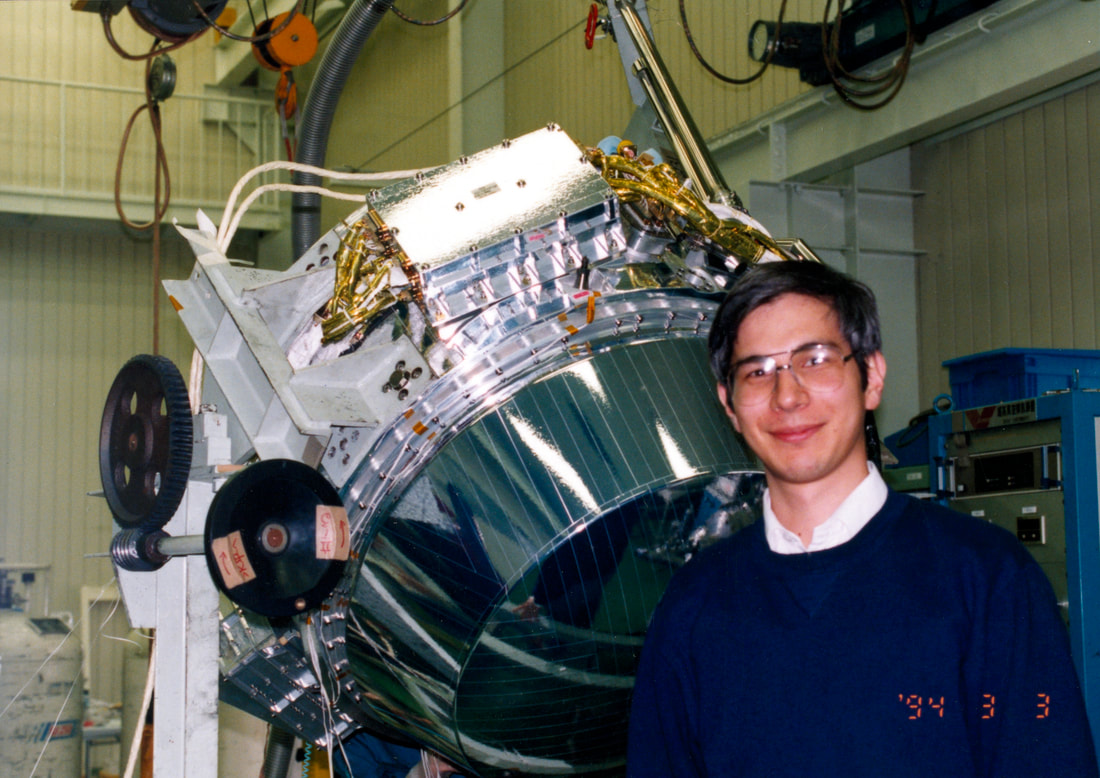
Mino in front of the infrared telescope being assembled in Japan. Deep inside is Mino’s core instrument, the FIRP.
Mino built one of the core instruments on the IRTS mission, the Far Infrared Photometer, FIRP. It was designed to explore the farthest reaches of the universe, billions of light years away. To achieve this goal the entire mirror of the IRTS had to be cooled to liquid helium temperature, 4 degrees Kelvin above absolute zero, and the entire FIRP had to be cooled still further down to 300 milliKelvin.
"FIRP exposed and how it looked fully assembled in its gold-plated housing"
Mino’s expertise in ultralow temperature physics made it possible. When the IRTS mission was launched, Mino’s FIRP operated successfully at the temperature of 300 milliKelvin, setting a world record for the lowest temperature achieved in space and for the longest time. Even in the rapidly developing field of satellite technology it took more than 10 years to break Mino’s record.
